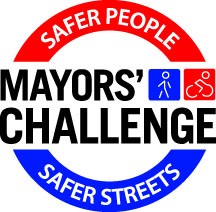AARP Hearing Center
A Pedestrian Is Killed Every 2 Hours and Injured Every 7 Minutes

Following is an excerpt of the remarks made by U.S. Transportation Secretary Anthony Foxx at the 2016 Summit for the Mayors’ Challenge for Safer People, Safer Streets, in Washington, D.C., on Sept. 16.
Since we kicked the challenge off over a year ago, 240 communities have signed on to work on the seven challenge areas, and our goal is to improve safety for bicyclists and pedestrians of all ages and abilities.
We’ve made undeniable progress, and today we honor the places big and small that took on the challenge and made extraordinary progress.
I am a former mayor myself. In fact, my mayor friends say, ‘Once you’re a mayor, you’re always a mayor.’ And I know that the leaders in this room today represent where the bike tires hit the road on this critical issue.
The reality is, we have a very convoluted, complex way to build transportation infrastructure in this country. The federal government, through this model, has tried to convene and tried to lay out best practices and tried to use creativity in our programs to help. But so much of our pedestrian and bicycle infrastructure is based in local government. In working together, we can make progress in turning the numbers of increased bicycle and pedestrian deaths into a downward cycle so that folks can bike and walk and live with the expectation of safety.

I’m proud to announce that we’ve also released the Federal Highway Administration’s, or FHWA’s, new strategic agenda for pedestrian and bicycle transportation. This is helping us get closer to the ultimate goal of zero bike and pedestrian fatalities. It also goes further in allowing for greater funding flexibility so communities can integrate walking and bicycling into their transportation systems. That’s the best practices and creativity I was talking about.
In a world full of technology and constant innovation, we also know that connectivity is crucial. The same is true for transportation. Connecting our network with bicycling and pedestrian options makes a better system for everybody. That’s why we are trying to build for future generations a great system that does work for everyone.
The reality is it needs to be a safe system. On average, a pedestrian is killed every two hours and injured every seven minutes in traffic crashes. That’s not what we want to see. That’s not what you want to see. That’s not what the American people want to see. We all want to see those numbers at zero.
During my time at USDOT one of our biggest priorities has been to make our transportation safe system for everyone. We’ve been bringing bicycling and walking up to the same level of safety that we expect in automobiles and airplanes and other modes of transportation.
That’s why we are recognizing some of the most innovative and impactful communities that have excelled in the seven challenge areas for the Mayors’ Challenge for Safer People, Safer Streets. We have selected award winners in each category as well as three overall challenge winners. We had great entries to choose from. So we chose both a large city and a small city for a winner in each category, for a total of 14.
See the Winners’ List for the 2016 Mayors’ Challenge of Safer People, Safer Streets
YOU MAY ALSO LIKE
- Find transportation solutions from other mayors in the free AARP book Where We Live
- Learn how bicycle-friendly streets benefit people who don’t ride bikes
- AARP Livability Fact Sheets
Visit AARP.org/livable and subscribe for free to the AARP Livable Communities e-Newsletter































































